Mesenchymal stem cell-induced doxorubicin resistance in triple negative breast cancer
- PMID: 25140317
- PMCID: PMC4124237
- DOI: 10.1155/2014/532161
Mesenchymal stem cell-induced doxorubicin resistance in triple negative breast cancer
Abstract
Triple negative breast cancer (TNBC) is an aggressive histological subtype with limited treatment options and a worse clinical outcome compared with other breast cancer subtypes. Doxorubicin is considered to be one of the most effective agents in the treatment of TNBC. Unfortunately, resistance to this agent is common. In some drug-resistant cells, drug efflux is mediated by adenosine triphosphate-dependent membrane transporter termed adenosine triphosphate-binding cassette (ABC) transporter, which can drive the substrates across membranes against concentration gradient. In the tumor microenvironment, upon interaction with mesenchymal stem cells (MSCs), tumor cells exhibit altered biological functions of certain gene clusters, hence increasing stemness of tumor cells, migration ability, angiogenesis, and drug resistance. In our present study, we investigated the mechanism of TNBC drug resistance induced by adipose-derived MSCs. Upon exposure of TNBC to MSC-secreted conditioned medium (CM), noticeable drug resistance against doxorubicin with markedly increased BCRP protein expression was observed. Intracellular doxorubicin accumulation of TNBC was also decreased by MSC-secreted CM. Furthermore, we found that doxorubicin resistance of TNBC was mediated by IL-8 presented in the MSC-secreted CM. These findings may enrich the list of potential targets for overcoming drug resistance induced by MSCs in TNBC patients.
Figures
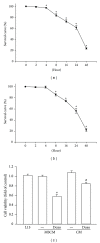

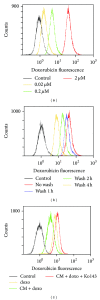
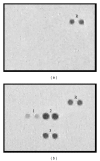
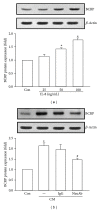
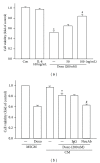
Similar articles
-
Peri-foci adipose-derived stem cells promote chemoresistance in breast cancer.Stem Cell Res Ther. 2017 Jul 27;8(1):177. doi: 10.1186/s13287-017-0630-2. Stem Cell Res Ther. 2017. PMID: 28750689 Free PMC article.
-
The pro- and anti-tumor roles of mesenchymal stem cells toward BRCA1-IRIS-overexpressing TNBC cells.Breast Cancer Res. 2019 Apr 24;21(1):53. doi: 10.1186/s13058-019-1131-2. Breast Cancer Res. 2019. PMID: 31014367 Free PMC article.
-
PYCR3 modulates mtDNA copy number to drive proliferation and doxorubicin resistance in triple-negative breast cancer.Int J Biochem Cell Biol. 2024 Jun;171:106581. doi: 10.1016/j.biocel.2024.106581. Epub 2024 Apr 19. Int J Biochem Cell Biol. 2024. PMID: 38642827
-
Tumor microenvironment: Challenges and opportunities in targeting metastasis of triple negative breast cancer.Pharmacol Res. 2020 Mar;153:104683. doi: 10.1016/j.phrs.2020.104683. Epub 2020 Feb 9. Pharmacol Res. 2020. PMID: 32050092 Review.
-
Mechanisms of Chemotherapy Resistance in Triple-Negative Breast Cancer-How We Can Rise to the Challenge.Cells. 2019 Aug 22;8(9):957. doi: 10.3390/cells8090957. Cells. 2019. PMID: 31443516 Free PMC article. Review.
Cited by
-
Human mesenchymal stem cells are resistant to Paclitaxel by adopting a non-proliferative fibroblastic state.PLoS One. 2015 Jun 1;10(6):e0128511. doi: 10.1371/journal.pone.0128511. eCollection 2015. PLoS One. 2015. PMID: 26029917 Free PMC article.
-
Current advances in biomarkers for targeted therapy in triple-negative breast cancer.Breast Cancer (Dove Med Press). 2016 Oct 6;8:183-197. doi: 10.2147/BCTT.S114659. eCollection 2016. Breast Cancer (Dove Med Press). 2016. PMID: 27785100 Free PMC article. Review.
-
Inflammation-Driven Breast Tumor Cell Plasticity: Stemness/EMT, Therapy Resistance and Dormancy.Front Oncol. 2021 Jan 26;10:614468. doi: 10.3389/fonc.2020.614468. eCollection 2020. Front Oncol. 2021. PMID: 33585241 Free PMC article. Review.
-
Inhibition of Bone Marrow-Mesenchymal Stem Cell-Induced Carbonic Anhydrase IX Potentiates Chemotherapy Efficacy in Triple-Negative Breast Cancer Cells.Cells. 2023 Jan 12;12(2):298. doi: 10.3390/cells12020298. Cells. 2023. PMID: 36672233 Free PMC article.
-
Recent Advances in Understanding Cholangiocarcinoma.F1000Res. 2017 Oct 9;6:1818. doi: 10.12688/f1000research.12118.1. eCollection 2017. F1000Res. 2017. PMID: 29067165 Free PMC article. Review.
References
-
- Owen M, Friedenstein AJ. Stromal stem cells: marrow-derived osteogenic precursors. Ciba Foundation Symposium. 1988;136:42–60. - PubMed
-
- Minteer D, Marra KG, Peter Rubin J. Adipose-derived mesenchymal stem cells: biology and potential applications. Advances in Biochemical Engineering/Biotechnology. 2013;129:59–71. - PubMed
-
- Tropel P, Noël D, Platet N, Legrand P, Benabid A, Berger F. Isolation and characterisation of mesenchymal stem cells from adult mouse bone marrow. Experimental Cell Research. 2004;295(2):395–406. - PubMed
-
- Dominici M, le Blanc K, Mueller I, et al. Minimal criteria for defining multipotent mesenchymal stromal cells. The International Society for Cellular Therapy position statement. Cytotherapy. 2006;8(4):315–317. - PubMed
Publication types
MeSH terms
Substances
LinkOut - more resources
Full Text Sources
Other Literature Sources
Research Materials

